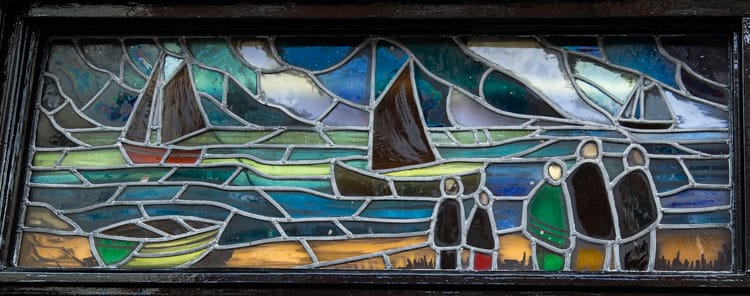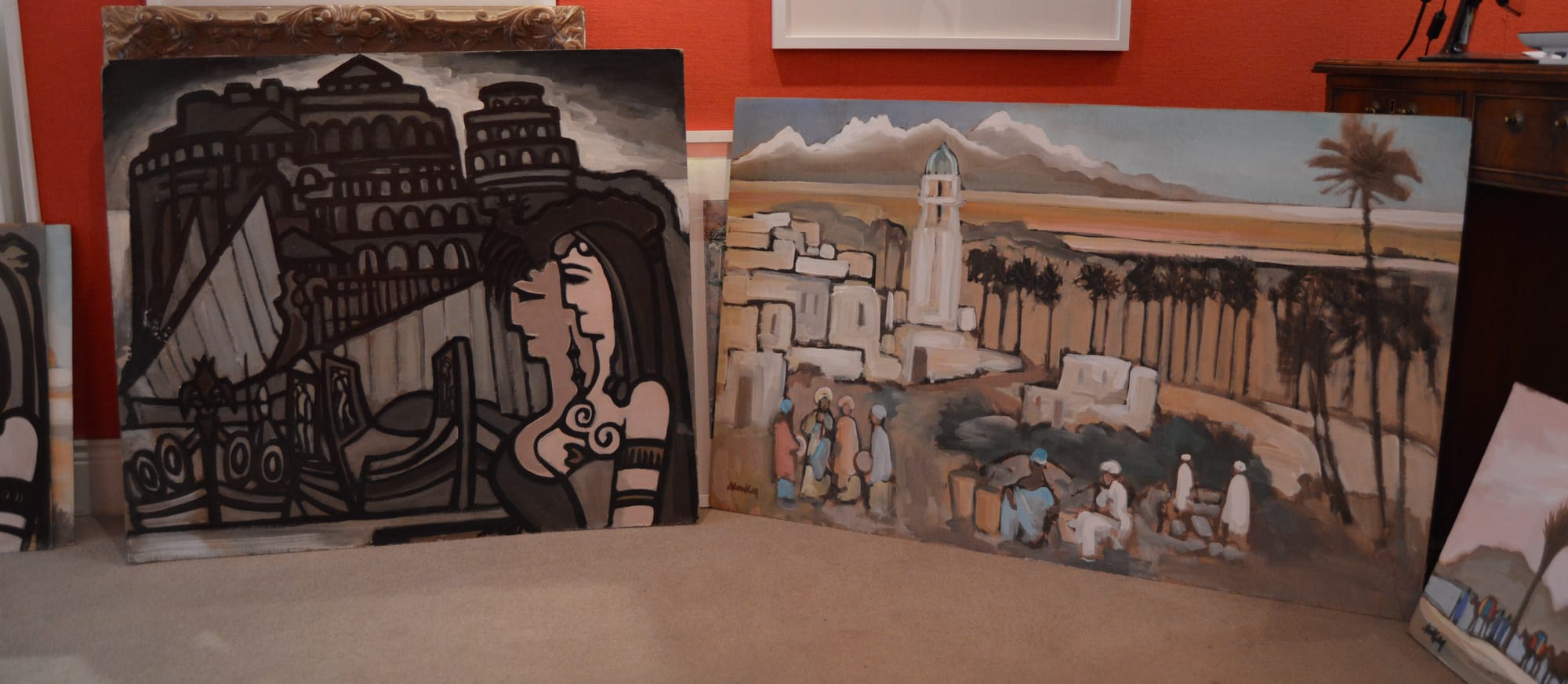What’s the best way to tell area residents about plans for a new asylum shelter nearby?
The government should tell communities directly about plans for new asylum shelters, some activists and politicians say.
Belfast artist Markey stopped at the Oriel Gallery to ask for directions to the American embassy because he was planning to emigrate. Instead, he ended up moving in upstairs, and leaving his mark on the place.

The colourful stained-glass panels above the Oriel Gallery on Clare Street catch the eyes of passers-by on their way to work in the morning and they glow eerily at night-time for those on their way home after a long day.
“We’re the only place along this strip that’s lit up at night,” says Mandy Williams of the gallery.
TheOriel Gallery is a venue for all types of Irish artists. Among them: Paul Henry, George Gillespie and of course David Marcus Robinson – or “Markey”, as art collectors know him.
Markey is often associated with the Oriel Gallery, as he was an artist in residence here from 1970 to 1996, just three years before his death. Though the gallery has had some other artists stay, none has ever stayed so long.
While working from his studio in the upstairs of the gallery, Markey designed the four stained-glass panels above the door – and the one in the gallery – which were installed in 1978.
They are similar to his paintings, which often feature scenes from the Aran Islands or other parts of the West. The stained-glass panels show sailboats, gable-end houses and triangular shaped women in shawls, in among the fragmented blocks of blue sea and sky.

“It’s a very straightforward piece, but I’m very happy with how it turned out,” says Kevin Kelly, who actually made the panels at Abbey Stained Glass in Kilmainham, long before he retired.
These are the only stained glass designs Markey did, says Williams, of the gallery. “He loved it, he thought it was fantastic at the time,” she adds.
Markey is known for a specific method, which started with painting one continuous black line. “He doesn’t hesitate; he paints in one fluid motion and fills in the colour,” explains Williams. Glass was the perfect opportunity to use his method and style in a new way, she says.
Williams thinks it’s this single motion that makes it so easy to spot forged pieces. You can tell a fake the second it comes in the door, she says.
“A lot of people think Markey’s work is simple, but it’s absolutely untrue,” she says. “Many people over the years have tried to fake his art, but it is very hard to do.”

Oliver Nulty – the founder of the gallery, who Markey would call “the proper rioter” – is quoted as saying: “The above stained glass panels testify to Markey’s versatility, and the gallery window is that silent salesman that still works while the city sleeps.”
Nulty opened the gallery in 1968 and Markey became the first artist in residence in 1970. From Belfast, Markey had travelled to Dublin with plans to migrate to America in the hope that his work would be valued there.
Though he had featured in some exhibitions in Belfast, he felt that his expressionist art was unappreciated there. At the time, expressionism was very popular in American and in the rest of Europe, but not here in Ireland, explains Williams.
With a painting under his arm, Markey called in to the gallery to ask where the American embassy was. Instead of giving him directions, Nulty – who had bought work from Markey in Belfast in 1953 – purchased the painting and convinced the artist to stay in Ireland.
Markey took up residence in a room above the gallery, which had been used to frame paintings.
Traditionally, Markey’s wasn’t the the type of work the Oriel Gallery sold, says Williams, but now he is one of the most successful artists the gallery has ever had, and his paintings still frequently come through. “They resonate with people,” she says
Markey became a well-known character in Dublin, remembered for his eccentricity and for looking through the bins behind Brown Thomas and Switzers for signs that he could paint on. It’s not that he couldn’t afford canvases, says Williams, he just preferred painting on card or board. They were easier to paint in long motions.
She takes out some of his works that the Hugh Lane Gallery recently gave to them. One painting is on a Brown Thomas poster. Another is on the cardboard packaging for Manor Farm chicken. Markey has also stuck handwritten notes and photocopies from history books to the back.
Over the years, Markey travelled to Spain, France, Morocco and South America and was influenced by their cultures. He was interested in history and exploration from his days as a merchant seaman, before he was a painter, explains Williams.
The paintings given to the gallery by the Hugh Lane differ from his usual scenes of the west of Ireland. They show the influences of Morocco and South America on his work.

After living within a culture for months, Markey would come back with lots of great ideas and paint for hours in his studio, says Williams.
She plans to have these on display sometime in September, and welcomes people to come in to have a look at them, as well as the stained-glass panels, which are always there.
Get our latest headlines in one of them, and recommendations for things to do in Dublin in the other.